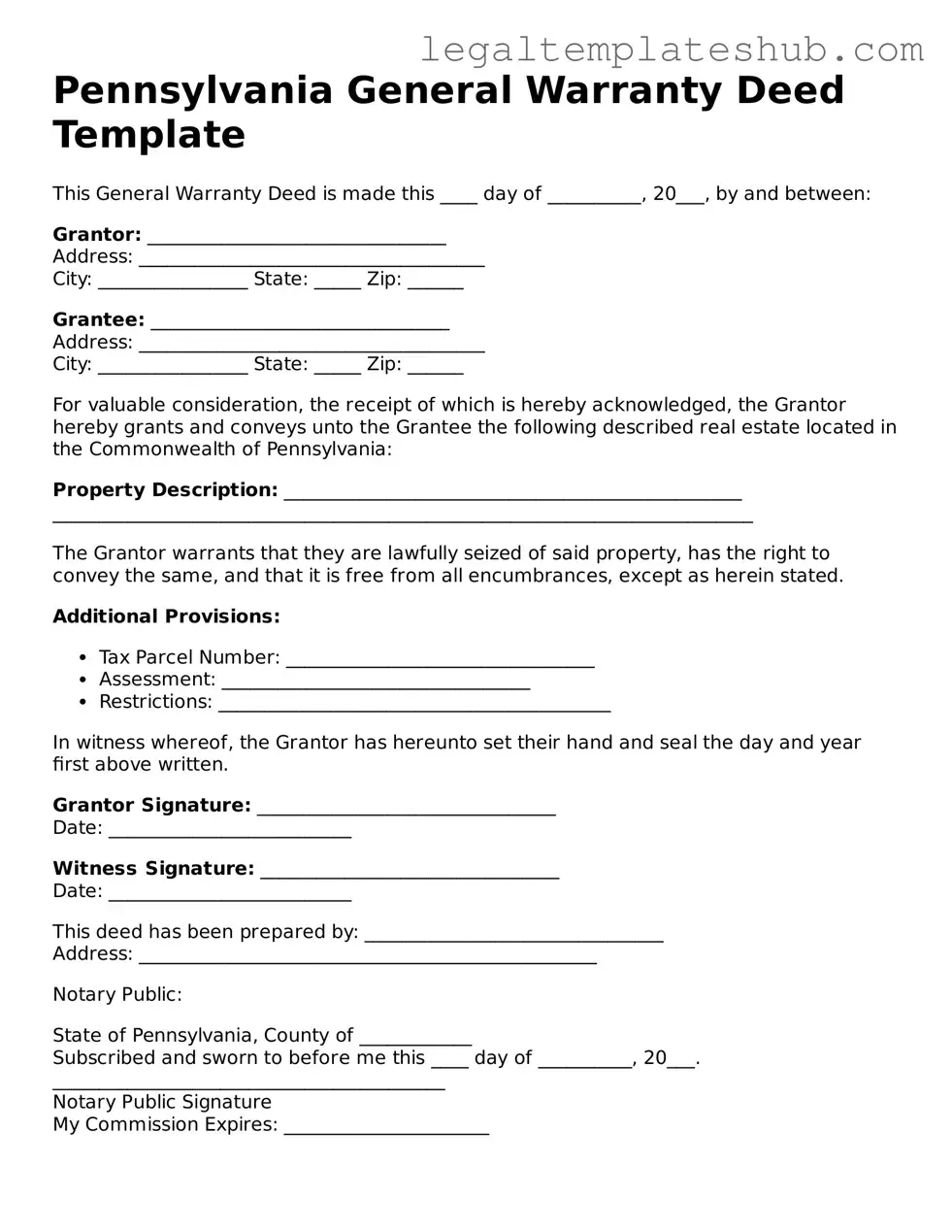Printable Deed Document for Pennsylvania
A Pennsylvania Deed form is a legal document used to transfer ownership of real property from one party to another. This form outlines the details of the transaction, including the names of the parties involved and a description of the property. To ensure a smooth transfer, it is essential to fill out the form accurately; click the button below to get started.
Access Editor
